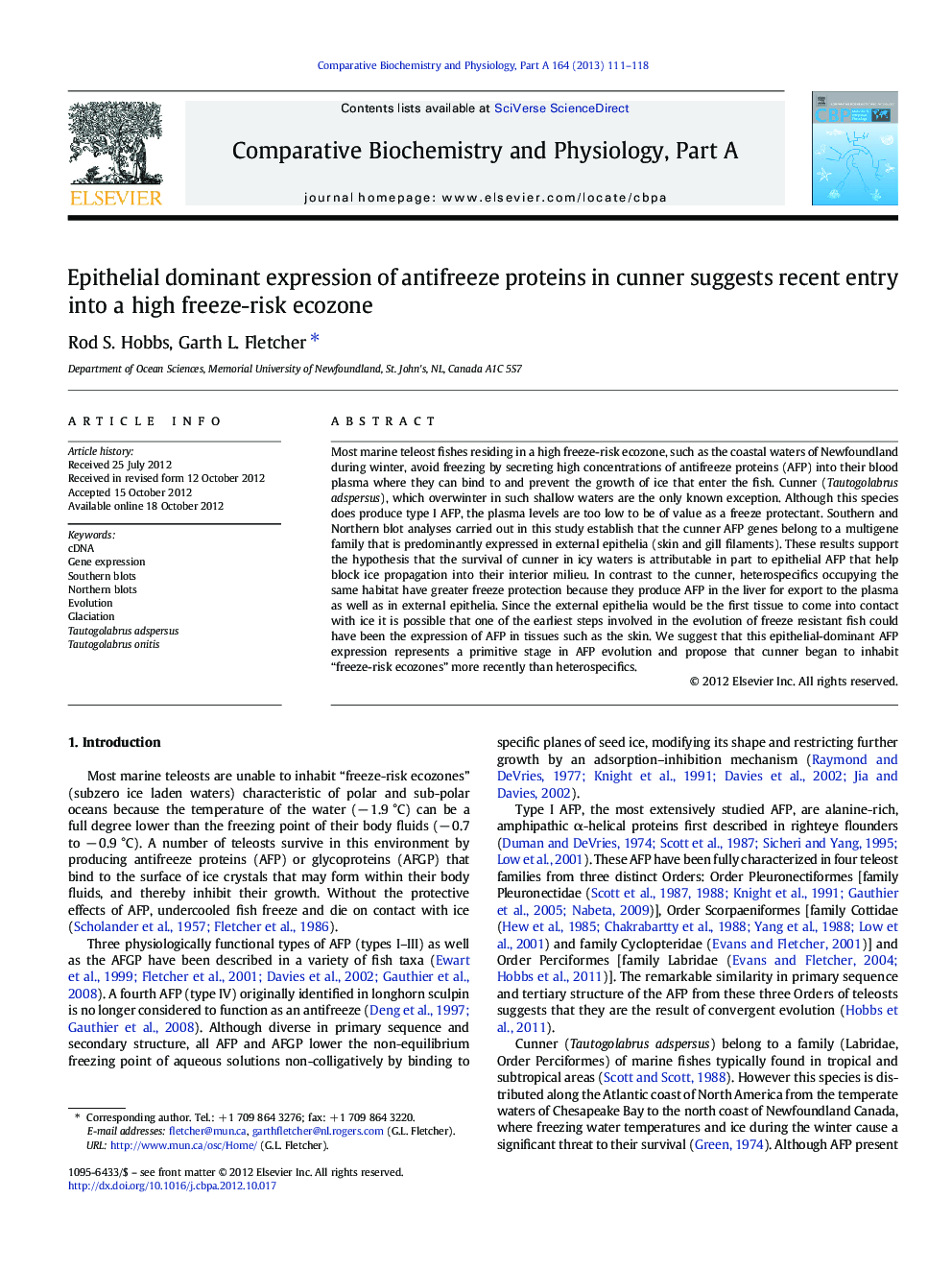| Article ID | Journal | Published Year | Pages | File Type |
|---|---|---|---|---|
| 10818962 | Comparative Biochemistry and Physiology Part A: Molecular & Integrative Physiology | 2013 | 8 Pages |
Abstract
Most marine teleost fishes residing in a high freeze-risk ecozone, such as the coastal waters of Newfoundland during winter, avoid freezing by secreting high concentrations of antifreeze proteins (AFP) into their blood plasma where they can bind to and prevent the growth of ice that enter the fish. Cunner (Tautogolabrus adspersus), which overwinter in such shallow waters are the only known exception. Although this species does produce type I AFP, the plasma levels are too low to be of value as a freeze protectant. Southern and Northern blot analyses carried out in this study establish that the cunner AFP genes belong to a multigene family that is predominantly expressed in external epithelia (skin and gill filaments). These results support the hypothesis that the survival of cunner in icy waters is attributable in part to epithelial AFP that help block ice propagation into their interior milieu. In contrast to the cunner, heterospecifics occupying the same habitat have greater freeze protection because they produce AFP in the liver for export to the plasma as well as in external epithelia. Since the external epithelia would be the first tissue to come into contact with ice it is possible that one of the earliest steps involved in the evolution of freeze resistant fish could have been the expression of AFP in tissues such as the skin. We suggest that this epithelial-dominant AFP expression represents a primitive stage in AFP evolution and propose that cunner began to inhabit “freeze-risk ecozones” more recently than heterospecifics.
Related Topics
Life Sciences
Biochemistry, Genetics and Molecular Biology
Biochemistry
Authors
Rod S. Hobbs, Garth L. Fletcher,
